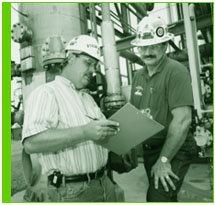|
Climate Action Network Australia I met with some people at BP in Melbourne last week to discuss the launch of BP's "Greenhouse-neutral petrol" by Sir John Brown, BP's Global Manager. As you may or may not be aware, the AGO also announced a greenhouse labelling scheme which will go live on January 1, 2001, with BP's product the first with a government "endorsement". Companies will be able to brand their products "greenhouse friendly" or "greenhouse free" where products have their life cycle emissions abated by at least 50% and 100% respectively. The first stage of BP's product roll-out involves BP charging the customer no extra to abate emissions from her/his petrol consumption. To participate in the initiatives, consumers will have to purchase Ultimate which is a 98% octane fuel and priced approximately 4 cents more than standard unleaded. BP will contribute between 2 and 3 cents per litre to abating emissions from the fuel. Remember, at this stage, it costs the consumer no extra (other than purchasing the high performance fuel). The second stage (ear-marked for mid-next year) provides an opportunity for the consumer to make an additional contribution to reduce greenhouse emissions, when she/he purchases fuel at BP stations. This concept could directly compete with Green Power products. The big questions are: What abatement activities will be undertaken by BP? And how will these activities be verified? BP is still working through its process for choosing abatement activities, although it has indicated a degree of progress. BP states that no more than 20% of the portfolio will involve sinks. BP also states that least-cost abatement is not necessarily a priority (ie. coal-seam methane may get a Guernsey, but it is interested in other projects too). BP also stated that projects that are visually relevant to the consumer may take precedent.. this could include cogeneration, or highly visual wind power activity along main transport corridors. The verifying agent is the Commonwealth Bank of Australia. ACF has not commented publicly on BP's initiative, but we watch closely as it develops. Background Imagine this: Gigantic transparent domes filled with lush and flourishing plant life growing in a contained, warm, carbon-dioxide-rich atmosphere. Normally blamed, in part, for global warming, carbon dioxide is supplied from the exhaust gases of a clean burning turbine cogenerator which too, provides power and heat to the greenhouse. As carbon dioxide is absorbed by growing plants, older, dying and decaying plant life provides biomass fuel to feed the turbine to complete the cycle. Sound farfetched? It isn't. With the exception of the biomass fuel it's already happening on a smaller scale in the UK. BG Technology has fitted a cogeneration system to a Capstone MicroTurbine (tm) to create MiniGen (tm). A first-of-its-kind application for the MiniGen combined-heat-and-power system was installed in a greenhouse operated by W.J.Findon and Son, Stratford-upon-Avon. Power from the MiniGen is used for greenhouse operations and its ultra-low emission exhaust discharges directly into the structure. Overall, the system reaches near 100% energy efficiency for this particular application, as residual exhaust also helps heat the glass building. Plant quality is improved by the carbon dioxide in the MiniGen exhaust stream. BG plans to develop other MiniGen packages that provide water and air heating and cooling. Visit BG SOLAR POWERED CHICAGO. Spire Solar Chicago (SSC), a division of Spire Corporation, and BP Solarex will work together to bring solar power and solar system manufacturing to the City of Chicago. SSC has entered into an agreement to provide the City and Commonwealth Edison with $8 million worth of solar systems. For its part, BP Solarex has invested in manufacturing equipment for the Chicago facility and will supply SSC with solar cells, materials and system components. Residential, utility scale and off-grid systems will be built in the Windy City. Visit Spire, . EV'S FOR CHINA. Can a nation build a modern industrialized economy without fossil fuel powered vehicles? It can try if it mandates an alternative. According to the American Electric Automobile Company, China's new five year plan calls for 20% of all vehicles produced in the nation to be zero emission electric vehicles. To help meet this target American Electric has announced a joint venture with Guangdong Vick Wei Electric Vehicle to be known as American Electric Automobile ASIA or EVASIA. The new company will convert and remanufacture a sport utility vehicle to electric drive with off-the-shelf and proprietary electric components. American Electric keeps its cost-per-vehicle down by remanufacturing out-of-production cars and trucks. EVASIA was awarded a license through China's National Electric Vehicle testing center, which will allow their EV to be used on all roads in the nation. The company would eventually like to sell the EV outside of China. Visit American Electric..
|

